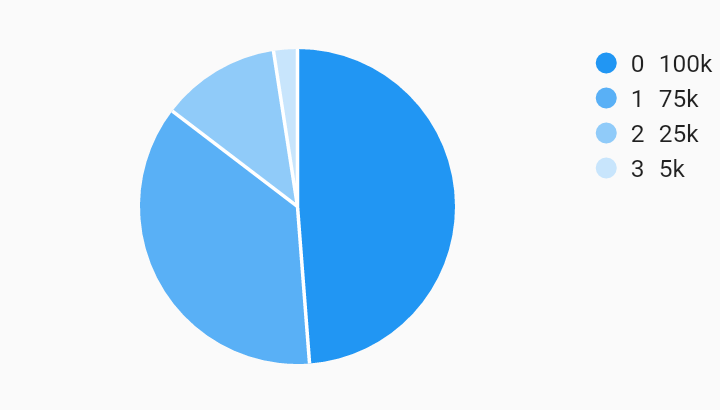community_charts
Datum Legend With Measures Legends Example

Example:
/// Bar chart with example of a legend with customized position, justification,
/// desired max rows, and padding. These options are shown as an example of how
/// to use the customizations, they do not necessary have to be used together in
/// this way. Choosing [end] as the position does not require the justification
/// to also be [endDrawArea].
import 'package:flutter/material.dart';
import 'package:community_charts_flutter/flutter.dart' as charts;
/// Example that shows how to build a datum legend that shows measure values.
///
/// Also shows the option to provide a custom measure formatter.
class DatumLegendWithMeasures extends StatelessWidget {
final List<charts.Series> seriesList;
final bool animate;
DatumLegendWithMeasures(this.seriesList, {this.animate});
factory DatumLegendWithMeasures.withSampleData() {
return new DatumLegendWithMeasures(
_createSampleData(),
// Disable animations for image tests.
animate: false,
);
}
@override
Widget build(BuildContext context) {
return new charts.PieChart(
seriesList,
animate: animate,
// Add the legend behavior to the chart to turn on legends.
// This example shows how to optionally show measure and provide a custom
// formatter.
behaviors: [
new charts.DatumLegend(
// Positions for "start" and "end" will be left and right respectively
// for widgets with a build context that has directionality ltr.
// For rtl, "start" and "end" will be right and left respectively.
// Since this example has directionality of ltr, the legend is
// positioned on the right side of the chart.
position: charts.BehaviorPosition.end,
// By default, if the position of the chart is on the left or right of
// the chart, [horizontalFirst] is set to false. This means that the
// legend entries will grow as new rows first instead of a new column.
horizontalFirst: false,
// This defines the padding around each legend entry.
cellPadding: new EdgeInsets.only(right: 4.0, bottom: 4.0),
// Set [showMeasures] to true to display measures in series legend.
showMeasures: true,
// Configure the measure value to be shown by default in the legend.
legendDefaultMeasure: charts.LegendDefaultMeasure.firstValue,
// Optionally provide a measure formatter to format the measure value.
// If none is specified the value is formatted as a decimal.
measureFormatter: (num value) {
return value == null ? '-' : '${value}k';
},
),
],
);
}
/// Create series list with one series
static List<charts.Series<LinearSales, int>> _createSampleData() {
final data = [
new LinearSales(0, 100),
new LinearSales(1, 75),
new LinearSales(2, 25),
new LinearSales(3, 5),
];
return [
new charts.Series<LinearSales, int>(
id: 'Sales',
domainFn: (LinearSales sales, _) => sales.year,
measureFn: (LinearSales sales, _) => sales.sales,
data: data,
)
];
}
}
/// Sample linear data type.
class LinearSales {
final int year;
final int sales;
LinearSales(this.year, this.sales);
}